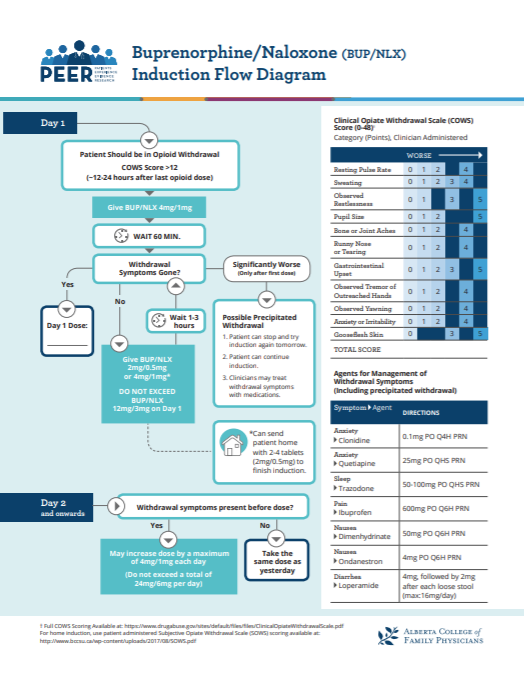The Patients Experience Evidence Research (PEER) Team were recently published in the May issue of the Canadian Family Physician for their Simplified Guideline: Managing Opioid Use Disorder in Primary Care.

PEER consists of a group of practising family physicians and allied health care practitioners with over 30 years in providing patient care in both rural and urban practice settings. They recognize the learning needs of practising family physicians (and their teams) and provide “education by primary care for primary care.”
The objective of the Guideline is to use the best available evidence and principles of shared, informed decision making to develop a clinical practice guideline for a simplified approach to managing OUD in primary care.
Recommendations outline the role of primary care in treating patients with OUD, as well as pharmacologic and psychotherapy treatments and various prescribing practices (e.g. urine drug testing and contracts).
For more Guideline related tools and resources visit the PEER Simplified Guideline webpage.


2 Responses
Can you please help me to understand how to interpret the shaded boxes in the COWS scoring box?
Thanks so much,
Jennifer
Hello Jennifer,
The COWS score on the PEER one-page handout is a smaller representation of the full Clinical Opioid Withdrawal Scale which can be found here: http://www.bccsu.ca/wp-content/uploads/2017/08/Clinical-Opiate-Withdrawal-Scale.pdf
As you will see, each subjective and objective finding has a scoring system. Once you use it a few times you can generally estimate a patient’s withdrawal severity by thinking in terms of “mild, moderate, severe” and attaching a numeric value to that. For your first few assessments you may want to use the traditional full page COWS and then once you become comfortable seeing patients in withdrawal, the smaller version on the PEER handout will be a quick reminder during your assessment.
Dr. Jessica Kirkwood discusses this further in her Office-based Induction of Buprenorphine/Naloxone video with the CFPC: https://vimeo.com/showcase/5685262/video/340645534